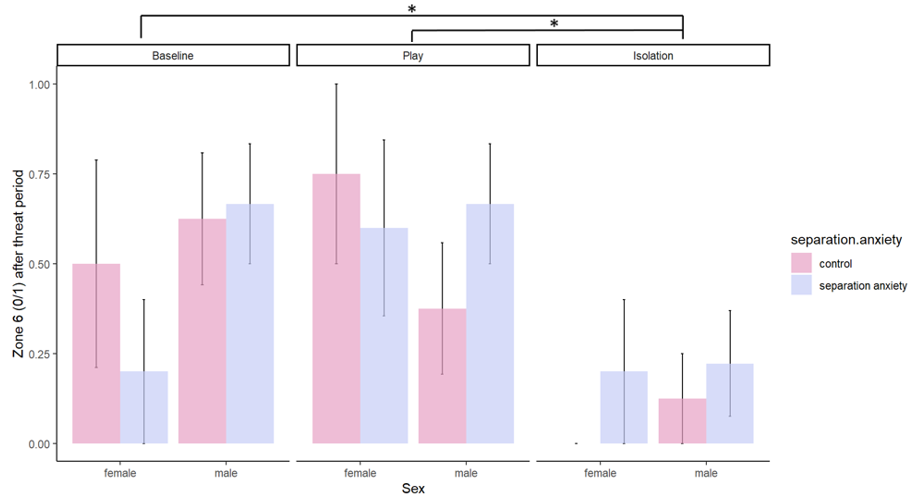Separation anxiety, attention bias test (ABT; baseline, play, and isolation), or sex had no effect on any behaviour during the threat period except for that ABT had an affect on two. One of them was that dogs looked more at the threat in baseline compared to both play and isolation. The other one was that dogs spent more time close to the door (zone five) during isolation compared to both baseline and play. Many behaviours included no significant data in any of the periods (before, threat, and after).
Isolation compared to both baseline and play
The behaviours presented below were significantly affected by ABT (baseline, play, or isolation), where isolation was different from both baseline and play.
Dogs barked more during isolation before (A) and after (B) the threat period (*** p<0.001). Furthermore, dogs with separation anxiety barked more during isolation before and after the threat period (p<0.05).
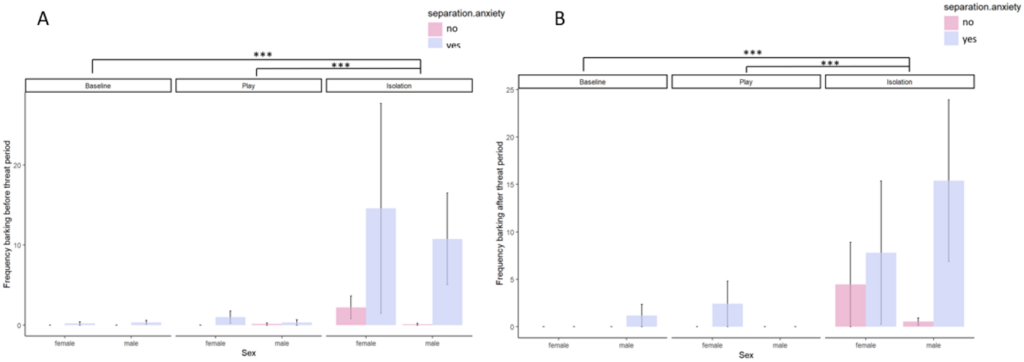
Dogs performed other vocalisation (vocalisation not including barking) more during isolation before (A) and after (B) the threat period (*** p<0.001).
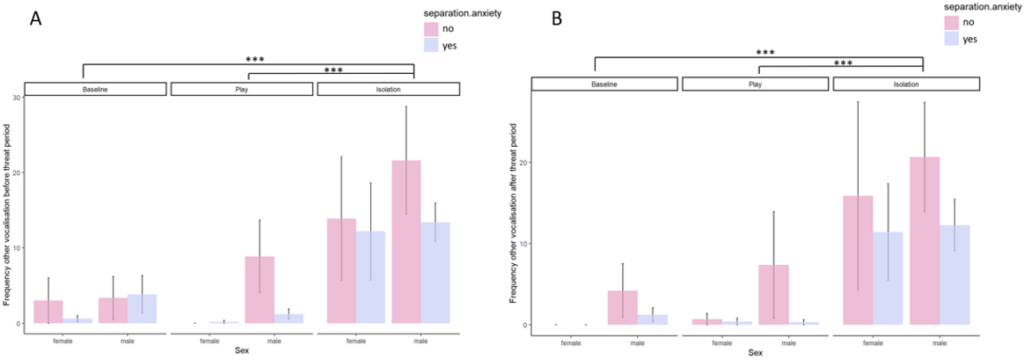
Dogs spent more time looking at the door during isolation before (A) and after (B) the threat period (** p<0.01, *** p<0.001).
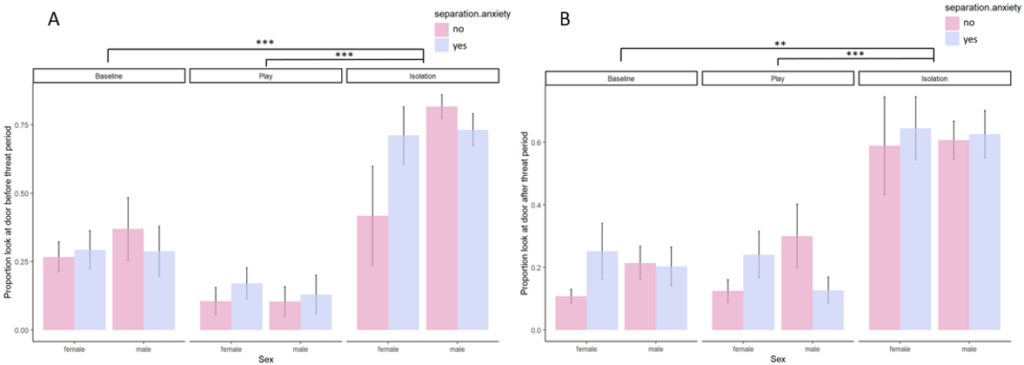
Dogs spent more time close to the door (zone five) during isolation during the threat period compared to baseline (* p<0.05) and play (trend; 0.05<p<0.1).
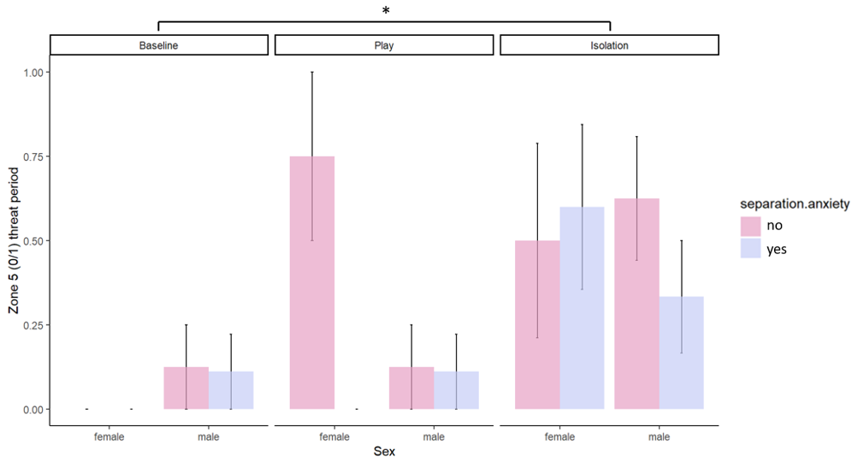
Dogs spent less time in the area where the owner stood during baseline and play (zone six) in isolation in the after threat period (* p<0.05).
